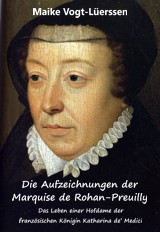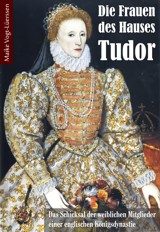als E-Book bei amazon.de erhältlich, € 6,99
als Buch bei amazon.de erhältlich, € 11,63, ISBN 978-1-5190-3331-4


Er war der erste Sohn von Claude von Guise (1496/97-1550) und ein Onkel der berühmten schottischen Königin Maria Stuart. Verheiratet war er mit Anna d'Este (1531-1607), die ihm sieben Kinder schenkte, u. a. seine Söhne: Heinrich I. (1549-1588), der nächste Herzog von Guise; Karl (oder Charles) (1554-1611), Herzog von Mayenne; und Ludwig (oder Louis) (1555-1588), Kardinal.
"They [die Guisen] incited and manipulated popular Catholic feeling and used the new medium of print to create a religious party with mass support. … the Guise led a religious and political revolution in France that overthrew the Valois monarchy ... [that was] a Machiavellian pursuit of self-interest in the name of religion. ... the Guise were uniformally tall … Maria Stuart … was 5 feet 11 inches tall and she shared with her uncle [Francois of Guise] the distinctive blond hair, which made the Guise look so un-French like ... Red and yellow were the colours of the House of Lorraine. It was used for the duke's livery, on which was stitched the distinctive ducal badge (Kreuz mit zweitem Strich etwas über den unteren Teil des senkrechten Strichs), today known as the cross of Lorraine, but in those days more properly called the cross of Anjou – a reminder that the Guise claimed descent from one of the greatest of medieval princely houses ... [Die Lieblingsfarbe von Francois de Lorraine war Rot] ... wearing a hat topped with red plumes, 'for he loved plumes'. ...The onlookers' gaze could not have missed the ducal coat of arms, which was everywhere to be seen: on the surcoats of his [François de Lorraine] men, on the carriage which carried his pregnant wife, Anne d'Este, and, not least, on his battle standard, unfurled by the standard bearer of the gendarmes, which depicted three silver eaglets on a red band set on a yellow background. The eaglets were a reminder of his House's imperial heritage – that they were vicars of the Holy Roman Empire … Coat of arms symbolized the identity of the family and, with the badges, banners, and livery … The quarters of the duke's coat of arms represented the seven other sovereign houses from which he claimed descent: Hungary, Naples, Jerusalem, Aragon, Guelders, Jülich, and Bar. ... For both Guise brothers [Francois and Charles] politics came before religious scruples ... Francois showed little interest in religion, theology being a matter for priests. He took part in processions and occasionally went on pilgrimage, but he seems to have shunned the ostentatious shows of piety beloved of his mother and, at times, by his father. ... Households displayed the grandeur and generosity of the prince. Duke Francois supported a household of 156 persons in 1556 rising to 164 in 1561. At this time his wife's household contained fifty-five people ..." (in: Stuart Carroll: Martyrs and Murderers – The Guise Family and The Making of Europe. Oxford and New York 2009, pp. vi-3/66/86).


als Buch bei amazon.de: 552 Seiten, mit Stammtafeln und 292 sw Bildern, Independently published, 1. Auflage, ISBN 978-1-9768-8527-3, € 31,84 (großes Buchformat: 21 x 27 cm)
als E-Book bei amazon.de erhältlich, ca. 1.000 Seiten mit Stammtafeln und 292 Bildern, € 29,89